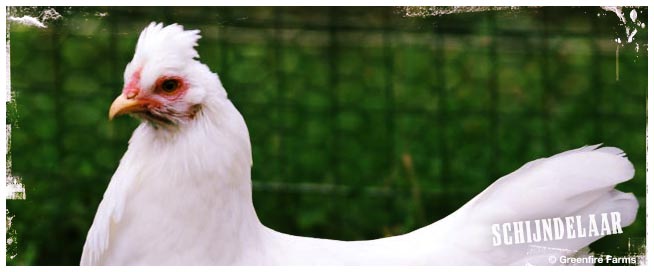Okay, let’s tackle the tough part first: It’s pronounced “Shine-dul-ar.” And hidden behind this impossible name with colliding consonants is perhaps the coolest modern chicken breed to emerge and be officially recognized in the latter part of the 20th Century.
| Item | 1+ | Quantity |
|---|---|---|
| Schijndelaar Day-Old Chick Unsexed | 49.00 | |
| Schijndelaar Eggs | 10.00 | Sold Out |
Schijndel is a small Netherlands village that over its seven-hundred-year history has given birth to an astounding number of competitive cyclists and one very interesting poultry breed. (Perhaps two since Schijndel is at the center of the region that gave us the Brabanter.)
The Schijndelaar was created by local veterinarian Ruud Kaasenbrood in the late 20th Century by crossing Araucanas (for their blue egg gene), Sumatras (for their long bodies), Dutch crested fowls (for their crests), Brabant fowl (for who know what) and Leghorns (for their legendary egg production). Here is how Dr. Kaasenbrood describes the beer-soaked origins of the Schijndelaar:
About 25 years ago, as a member of the ESKV, I gave a lecture at a member meeting about the doctrine of heredity, trying to explain the principles of the Laws of Mendel and the general principles of hereditary doctrine. As the attendees consisted of amateur breeders who were basically all busy perfecting an existing breed, I made clear the usefulness of heredity in this perfecting. In addition, I indicated that with the necessary knowledge and perseverance it should be possible to breed an entirely new breed, which you could call an ESKV grouse or a Schijndelaar, for example. These ideas received little response during the meeting. But after the meeting, when it became very pleasant under the influence of some alcoholic refreshments, we further elaborated the idea of "Schijndelaar" and a nice prototype was created on the back of a beer mat. This type had, apart from a fairly small crest, few head ornaments, had its long tail about horizontal and had to lay green eggs.
The white color was officially recognized in the Netherlands in 2001, and later also in Germany and other countries. Other colors include chocolate, blue, black, and cuckoo. Greenfire Farms recently imported the white variety.
We've noticed that our flock produces more blue eggs than green eggs. We do get eggs that are also green however the majority tend to be more on the blue side. Their blue eggs are a farm favorite!
Hatching Eggs - When hatching eggs from this breed, you will want to check every chick that hatches for the proper comb shape. If you notice any of the chicks that you hatch have a single ridge comb you will need to cull these chicks. The ideal comb shape is flat and wide on day one. You may also hatch chicks that are gray or have gray splotches and this is okay. We have observed that these chicks develop white feathers in adulthood.
The merits of every bird should be assessed as they reach adulthood.
The Schijndelaar was created by local veterinarian Ruud Kaasenbrood in the late 20th Century by crossing Araucanas (for their blue egg gene), Sumatras (for their long bodies), Dutch crested fowls (for their crests), Brabant fowl (for who know what) and Leghorns (for their legendary egg production). Here is how Dr. Kaasenbrood describes the beer-soaked origins of the Schijndelaar:
About 25 years ago, as a member of the ESKV, I gave a lecture at a member meeting about the doctrine of heredity, trying to explain the principles of the Laws of Mendel and the general principles of hereditary doctrine. As the attendees consisted of amateur breeders who were basically all busy perfecting an existing breed, I made clear the usefulness of heredity in this perfecting. In addition, I indicated that with the necessary knowledge and perseverance it should be possible to breed an entirely new breed, which you could call an ESKV grouse or a Schijndelaar, for example. These ideas received little response during the meeting. But after the meeting, when it became very pleasant under the influence of some alcoholic refreshments, we further elaborated the idea of "Schijndelaar" and a nice prototype was created on the back of a beer mat. This type had, apart from a fairly small crest, few head ornaments, had its long tail about horizontal and had to lay green eggs.
The white color was officially recognized in the Netherlands in 2001, and later also in Germany and other countries. Other colors include chocolate, blue, black, and cuckoo. Greenfire Farms recently imported the white variety.
We've noticed that our flock produces more blue eggs than green eggs. We do get eggs that are also green however the majority tend to be more on the blue side. Their blue eggs are a farm favorite!
Hatching Eggs - When hatching eggs from this breed, you will want to check every chick that hatches for the proper comb shape. If you notice any of the chicks that you hatch have a single ridge comb you will need to cull these chicks. The ideal comb shape is flat and wide on day one. You may also hatch chicks that are gray or have gray splotches and this is okay. We have observed that these chicks develop white feathers in adulthood.
The merits of every bird should be assessed as they reach adulthood.
| Egg Color | blue to green |
| Egg Size | Medium |
| Average number of eggs per year | 150 |
| Gamefowl | no |
| Country of Origin | Netherlands |
| Cold tolerant | no |
| Year of import(s) | 2018 |

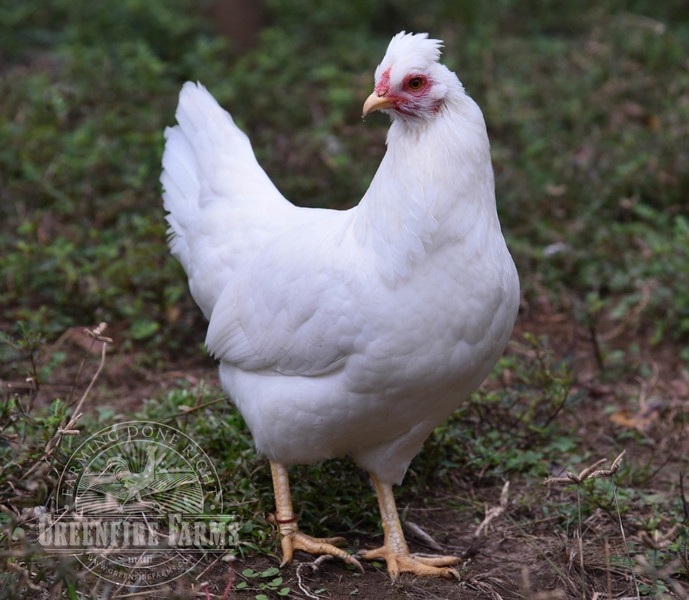


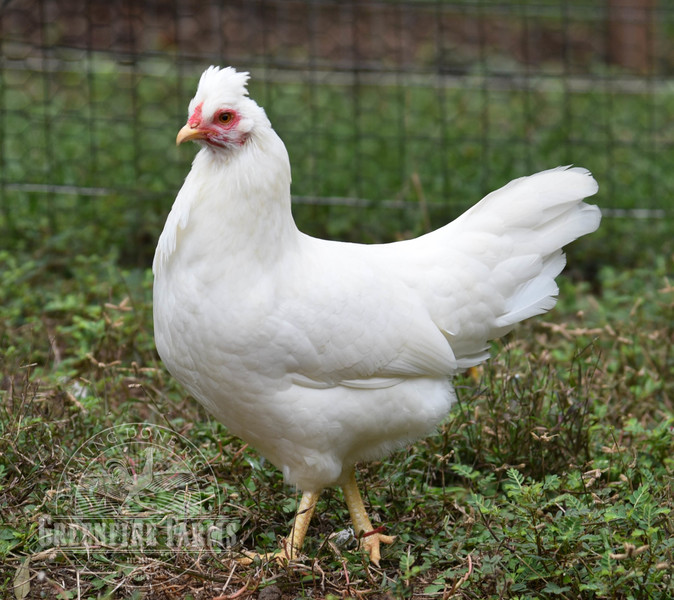


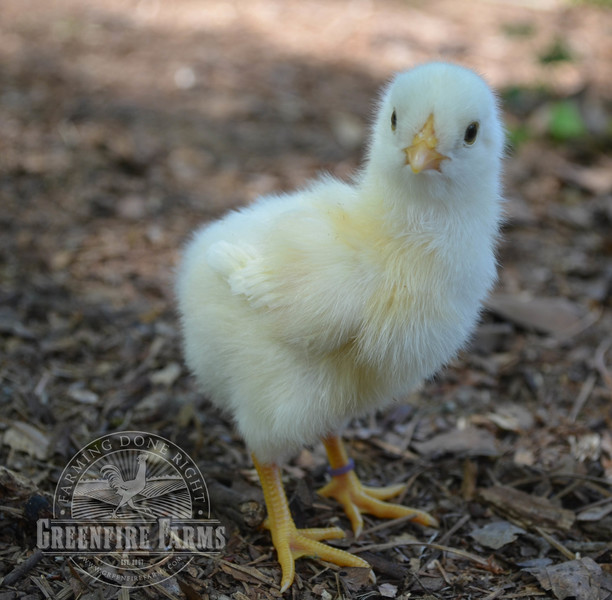
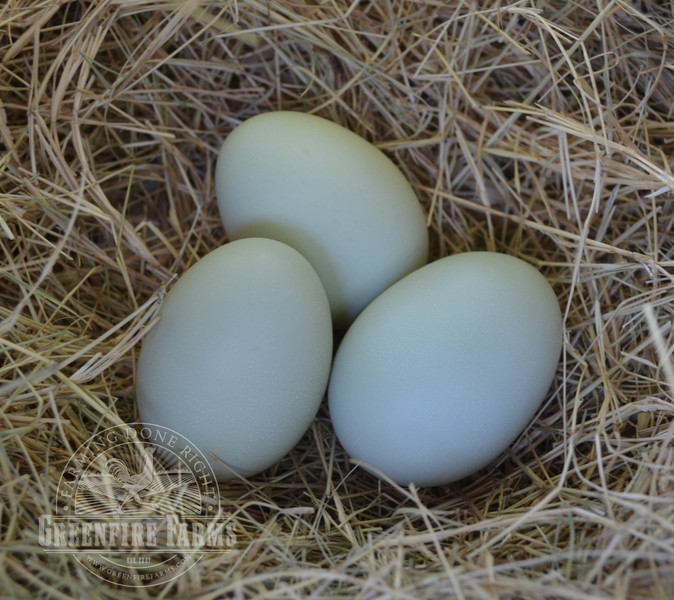

 Cart:
Cart: 

